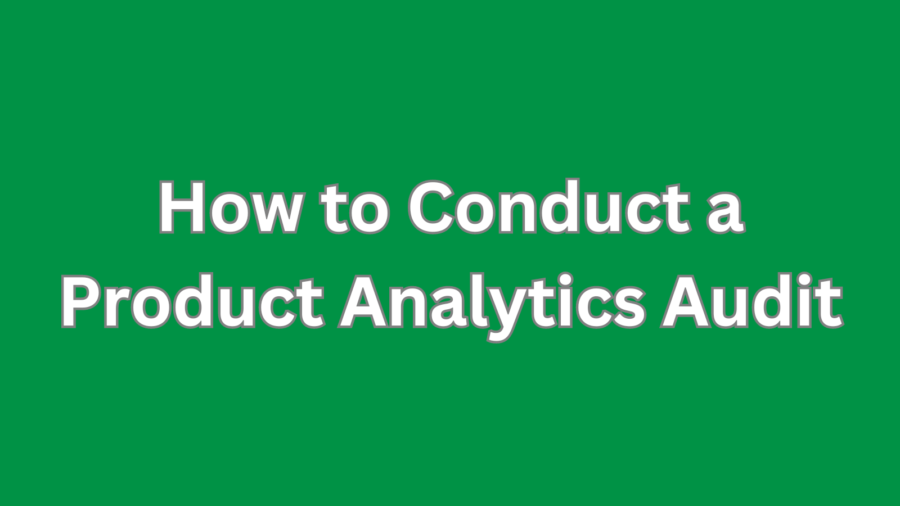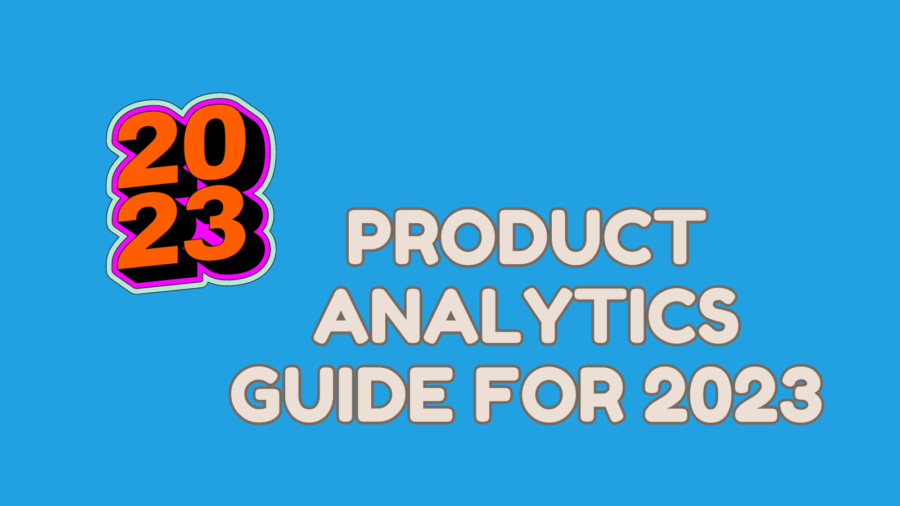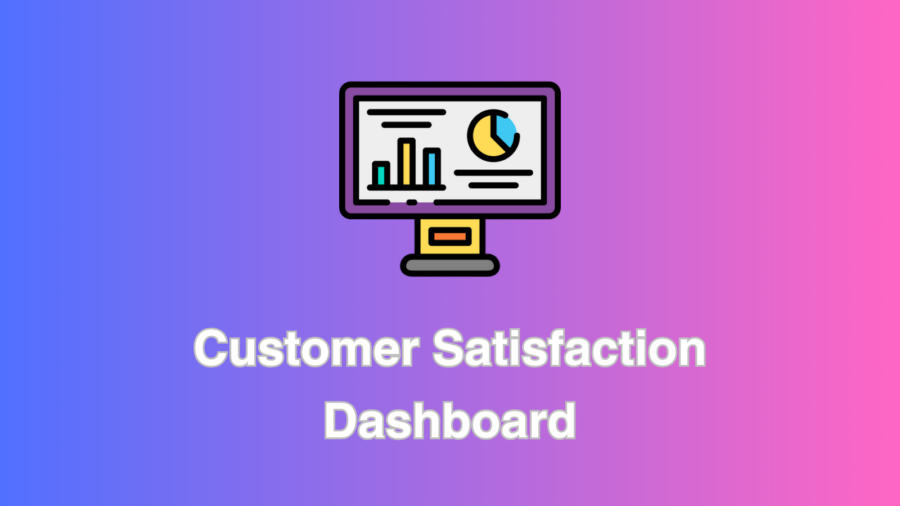Maintaining a competitive edge demands a proactive approach to refinement and optimization. A cornerstone of this strategy is the Product Analytics Audit – a systematic examination of the data and analytics infrastructure that underpins your product’s performance. This comprehensive guide will not only walk you through the key steps but also delve into the nuances of each, providing a deeper understanding of the intricacies involved in conducting a successful Product Analytics Audit.
Step 1: Define Objectives and Key Metrics
The first step in any Product Analytics Audit is to establish clear objectives. Ask yourself what you aim to achieve through this process. Are you looking to enhance user engagement, increase conversion rates, or improve overall user experience? Clearly defined objectives will serve as the North Star guiding the entire audit. Once the objectives are in place, identify the key metrics that align with your goals. These metrics should be specific, measurable, and directly tied to the success criteria outlined in your objectives. Whether it’s user retention, average session duration, or conversion rates, each metric should contribute meaningfully to the overall success of your product.
Step 2: Review Data Collection Processes
The effectiveness of any analytics initiative is only as good as the data it relies on. Dive deep into your data collection processes to ensure they are robust and aligned with industry best practices. Start by mapping out your data sources – are you collecting information from web analytics, mobile apps, or other platforms? Check the integrity of your tracking codes, ensuring they are correctly implemented and capturing the necessary data points. Verify the integration processes that facilitate the flow of data between different systems. Pay special attention to data privacy considerations, ensuring your data collection practices comply with relevant regulations such as GDPR or CCPA. A comprehensive review of data collection processes during the Product Analytics Audit will lay the groundwork for accurate and reliable analytics insights.
Step 3: Assess Data Accuracy and Consistency
Data accuracy is paramount in deriving meaningful insights from your analytics. During the Product Analytics Audit, meticulously assess the accuracy and consistency of your datasets. Look for discrepancies or outliers that may indicate data quality issues. Cross-reference data from different sources to ensure consistency and identify gaps in your data collection processes. Consider implementing data validation checks to flag anomalies in real time and maintain the overall health of your data. A focus on data accuracy ensures that the insights derived from your analytics are not only actionable but also reflective of the true state of your product’s performance.
Step 4: Evaluate Tool Setup and Configuration
Your analytics tools are the linchpin of your data-driven decision-making process. As part of the Product Analytics Audit, evaluate the setup and configuration of these tools to maximize their utility. Scrutinize event tracking to ensure that relevant user interactions are being captured. Review custom dimensions and metrics to tailor your analytics to specific business needs. Check the configuration of goals and funnels to align with your conversion objectives. Additionally, assess the compatibility of your analytics tools with other systems in your tech stack. The Product Analytics Audit is the opportune time to fine-tune these configurations, ensuring that your analytics tools are optimized to provide actionable insights aligned with your evolving business goals.
Step 5: Analyze User Segmentation and Behavior
Understanding your users is at the heart of any successful product strategy. During the Product Analytics Audit, leverage user segmentation to gain deeper insights into user cohorts. Identify patterns in user behavior, such as feature usage, session duration, and conversion paths. Consider demographic, geographic, or behavioral attributes for segmentation, tailoring your analysis to specific user personas. By understanding how different user segments interact with your product, you can make informed decisions to enhance user experience, address pain points, and capitalize on strengths. The Product Analytics Audit acts as a magnifying glass, focusing on nuanced user behaviors and providing a foundation for strategic product improvements.
Step 6: Review Conversion Funnel Effectiveness
Optimizing conversion funnels is pivotal for maximizing the impact of your product. In this step of the Product Analytics Audit, closely scrutinize the efficiency of your conversion funnels. Identify and analyze key performance indicators (KPIs) at each stage, from initial user engagement to final conversion. Pinpoint drop-off points and areas of friction within the funnel, and consider user feedback to gain qualitative insights. This granular analysis allows you to optimize the conversion journey, addressing pain points and streamlining the path to conversion. A thorough review of conversion funnel effectiveness is about improving conversion rates and creating a seamless and enjoyable user experience throughout the customer journey.
Step 7: Conduct A/B Testing and Experimentation Review
Innovation is a driving force behind product evolution, and A/B testing is a powerful tool for experimentation. As part of the Product Analytics Audit, evaluate the effectiveness of your A/B testing and experimentation methodologies. Examine the design, execution, and analysis of past experiments to identify successful strategies and learn from failures. Consider the statistical significance of results and ensure that the insights derived from experiments are actionable and contribute to product optimization. The Product Analytics Audit is a compass for future testing endeavors, guiding a data-driven approach to iterate and refine your product based on real-world user feedback and behavior.
Step 8: Collaborate with Stakeholders
A Product Analytics Audit is not a solitary endeavor; it thrives on collaboration with various organizational stakeholders. Engage with product managers, developers, marketing teams, and other relevant parties to gain diverse perspectives. Collaborative discussions provide context to the data and ensure that insights align seamlessly with overall business strategies. Schedule regular meetings and workshops during the audit to share findings, gather feedback, and collectively define action items. The collaborative aspect of the Product Analytics Audit fosters a culture of data-driven decision-making throughout the organization, ensuring that insights are not siloed but integrated into the broader product development and optimization process.
It’s crucial to emphasize that this is not a one-and-done task but an ongoing, iterative process. The insights gained from the audit serve as a foundation for continuous improvement and evolution. Regularly revisit and refine your analytics strategy based on the findings, adjusting objectives, metrics, and methodologies as your product and business landscape evolve. The Product Analytics Audit is not just about optimizing for today; it’s about building a resilient and adaptable framework that propels your digital product toward sustained success in a dynamic market. Remember, in the ever-changing digital landscape, a well-executed Product Analytics Audit is not just a strategic initiative – it’s the lifeline that ensures your product thrives in the face of evolving user expectations and market trends.





